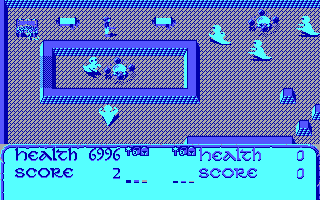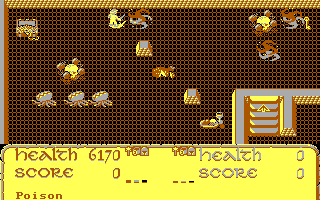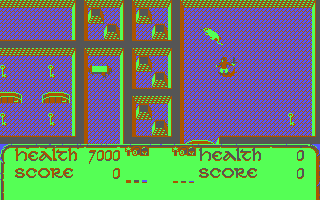You could do the same thing with EGA and up - see John Romero's Pyramids of Egypt (or this TSR, which I found a while back and somehow thought it entertaining enough to merit its own thread). Basically, later IBM hardware let you mess with the 4-color palette to your heart's content, though this kind of tweaking was rarely used.
Then again, the actual method of doing that on EGA/VGA seems to be distinct from (and mutually incompatible with) the PCjr/Tandy way... which leads me to suspect that your VGA chipset was specifically designed with some degree of Tandy compatibility in mind. Hey, stranger things have happened.
Interestingly, I found this with Mineshaft. This is a CGA-only game, however if run on the PCjr, it changes around the colors. Mineshaft uses INT 10h Function 1000h (first introduced on the PCjr and then a standard part of all later video cards) and thus will display the tweaked palette on everything except CGA (where you'll get the default CMW colors). I had thought Crossfire does this as well, but it appears to set Mode Bh on the PCjr (though still only displaying four colors at once).
I'm not sure exactly what's with the tweaked colors on Demon Stalker. It seems to be intended as Tandy support, yet the game already runs in Mode Bh. May have been for some oddball CGA clone card or perhaps for users of older Tandys that didn't have have the 384k required to run it in 16 colors.
Also I might mention Earl Weaver Baseball as another game that supports tweaked CGA colors. This seems to have been for good reason though because I found various references on old Usenet posts about how the game needs 12Mhz or better to run acceptably in EGA, so they made have put this in so you could run it on slower machines without the miserable default CGA palette.
Looking at those pics hurts my eyes. How the hell did we ever sit in front of CRT monitors with crappy refresh rates for hours at a time back in CGA days without going blind?
I use a Tandy CM-11 monitor on my XT. It's fuzzy stuff, and 80-column text is especially bad to look at.


